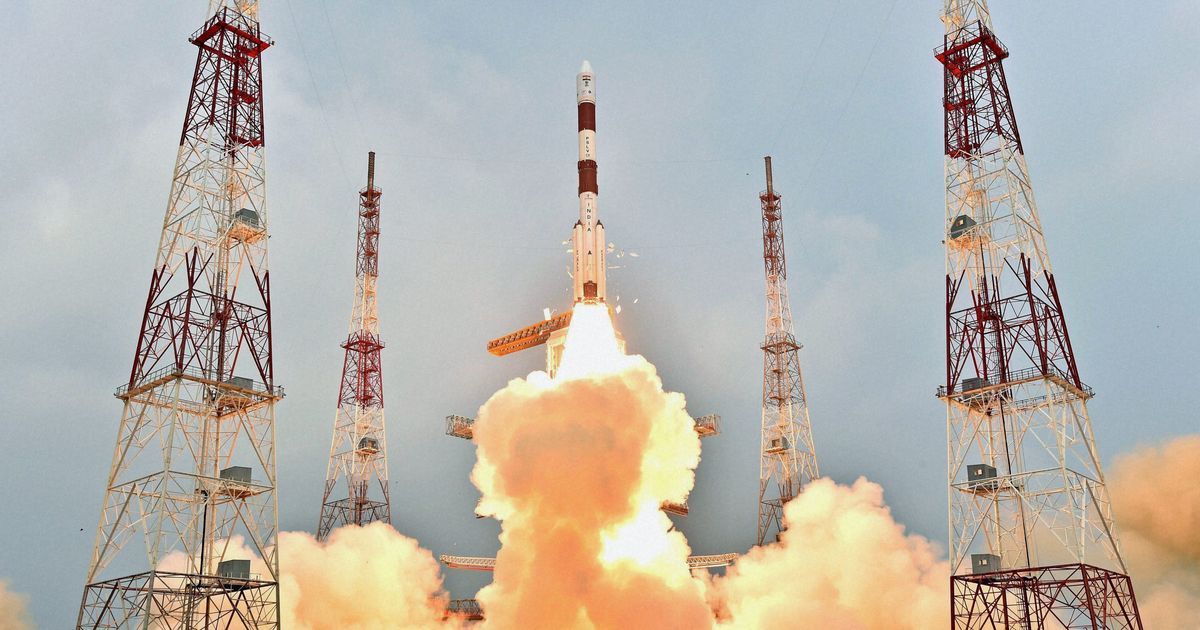The Indian Space Research Organisation (ISRO) has made headlines worldwide with the successful launch of the LVM3-M5 rocket, carrying CMS-03, India’s heaviest communication satellite to date. This powerful and strategic satellite was lifted from the Satish Dhawan Space Centre (SDSC), Sriharikota, marking another major victory for India’s space and defence capabilities.
The mission cements ISRO’s status as a global space leader and strengthens India’s strategic communication systems — especially in the defence and maritime sectors.
About the Satellite: CMS-03 (GSAT-7R)
CMS-03 is a next-generation, multi-band communication satellite designed primarily to support India’s navy and maritime communication systems. With advanced communication bands and high-power coverage, it ensures secure data, voice, and video transmission across vast ocean regions and terrestrial networks.
Key Highlights of CMS-03:
-
Heaviest communication satellite launched by ISRO so far
-
Designed for defence and maritime communication
-
Multi-band communication capability (including secure defence channels)
-
Long expected mission life
This satellite enhances India’s secure communication infrastructure, promoting technological self-reliance under the vision of Aatmanirbhar Bharat.
About the Rocket: LVM3-M5 (ISRO’s Heavy-Lift Vehicle)
Formerly called GSLV Mk-III, LVM3 is known as ISRO’s “Bahubali Rocket” because of its massive lifting power.
Rocket Specifications:
-
Three-stage heavy-lift launch vehicle
-
Cryogenic upper stage for high-efficiency space insertion
-
Capable of launching heavy satellites into Geosynchronous Transfer Orbit (GTO)
-
Also used for missions such as Chandrayaan-3 and planned Gaganyaan human spaceflight mission
With the LVM3-M5 performing flawlessly, ISRO has once again demonstrated consistent reliability in heavy-lift space missions.
Why This ISRO Rocket Launch Matters
This launch is important for several strategic reasons:
1. Strengthening India’s Defence Communications
CMS-03 will support the Indian Navy with real-time, secure communication across ships, submarines, aircraft, and command centres.
2. A Leap Toward Space Self-Reliance
The entire project — rocket + satellite — is developed in India, showcasing indigenous engineering and reducing foreign dependency.
3. Enhancing India’s Global Space Presence
Successfully launching a heavy satellite into GTO strengthens India’s reputation as a reliable space launch provider.
4. The Backbone for Future Missions
This success paves the way for:
-
Human spaceflight missions (Gaganyaan)
-
Heavier payload launches
-
Commercial satellite launches from international agencies
Mission Success: What Happens Next?
After the satellite was placed in Geosynchronous Transfer Orbit, it will gradually move to its final Geostationary orbit. Once operational, the satellite will boost communication networks and play a critical role in national security.
The LVM3 vehicle will now continue to serve as ISRO’s primary heavy-lift launcher for future space missions.
Conclusion
The ISRO Rocket Launch (LVM3-M5) carrying the CMS-03 communication satellite represents another monumental step for India. It proves India’s strength in space technology, boosts national defence capabilities, and reinforces India’s journey toward becoming a global space powerhouse.
With each mission, ISRO is not just launching satellites — it is launching India into a future filled with technological excellence, self-reliance, and international leadership.



